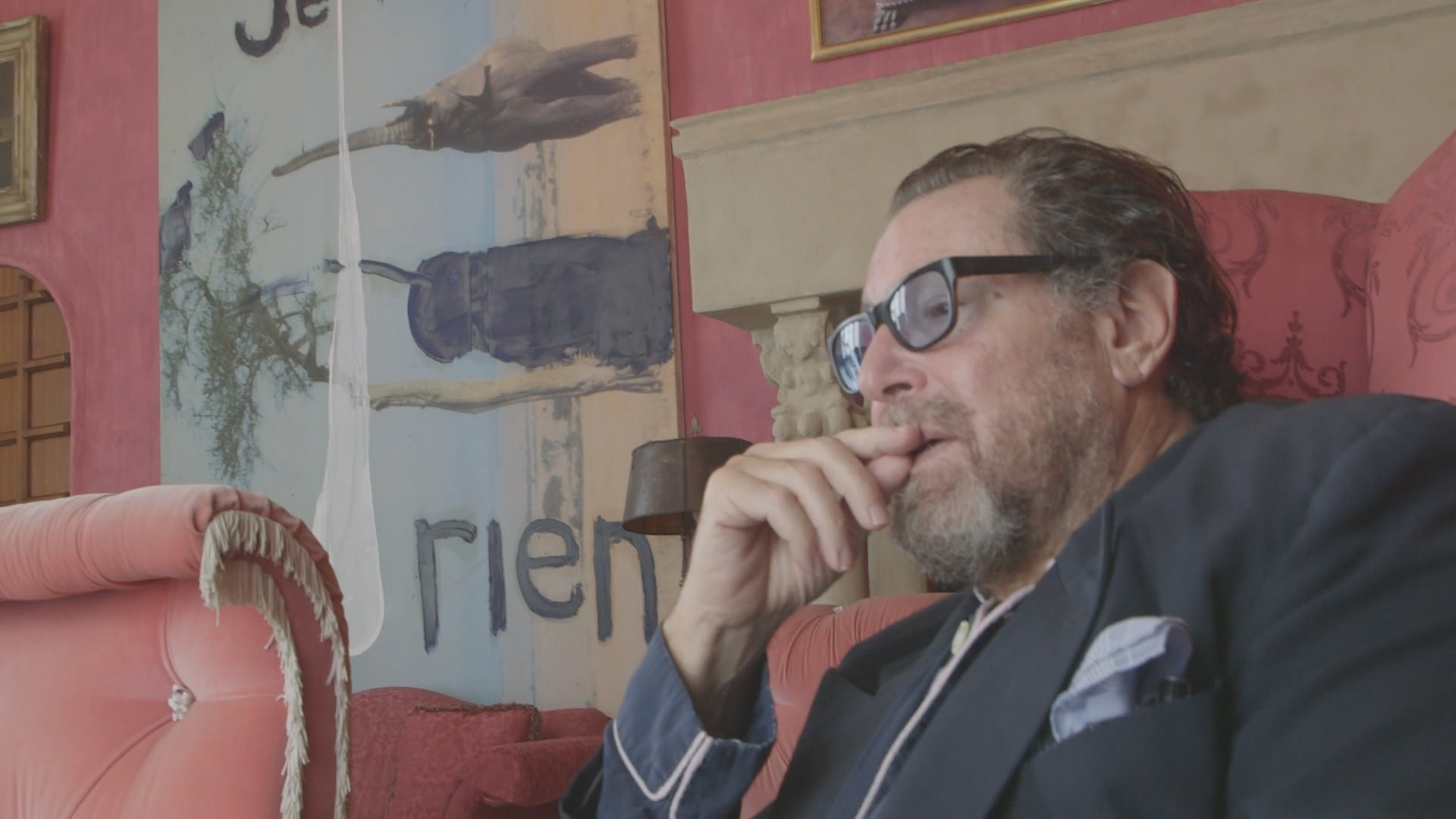Julian Schnabel has always worked on a grand scale, from the massive paintings he first made his name with, to his visceral depictions of entire lives as a film director, even extending to the creation of his own public image. Now, in the documentary “Julian Schnabel: A Private Portrait,” director Pappi Corsicato allows viewers an intimate glimpse into the working life of the famed artist. While Corsicato treats his subject extremely gently – there’s barely a hint of criticism of Schnabel and interviewees tout how controversial his work is without explaining why – his almost idyllic portrayal of Schnabel at work and play nevertheless makes for a largely seductive and engaging experience. But the lack of context often derails the entertaining film.
Born in Brooklyn but raised in Texas to supportive middle-class parents, his mother and sisters fondly recall their sibling’s incessant drawing and painting. But other than vague references to the big Texas sky and Schnabel’s love of surfing, Corsicato does not draw any direct connections to formative influences the artist had as a child. The most notable trait in the young Schnabel was his outsized ambition. The artist himself says, “When I was young, I just wanted to be a great artist, I didn’t even know what the art would look like.”
Chronicling Schnabel’s days as a young New York City striver, it becomes clear that the filmmaker is far more comfortable relating anecdotes about his subject’s personality than he is offering substantive analysis of his art. Schnabel’s success ushered painting back to the forefront of the art world after a decade where conceptual work ruled the 1970s, but very little context goes into detailing how. This choice is understandable, given the complexity of that intellectual milieu, but it does limit the the documentary’s depth.
However, even when the doc refrains from aesthetic opinions, one of the film’s greatest strengths is the wealth of footage of the artist at work. More so than almost any other painter, Schnabel is a joy to watch because of the scale and variety of his work. Corsicato supplies images of the painter throughout his career, in galleries so vast they require scaffolding, inside Italian villas, on top of New York rooftops, on a windswept patio in Montauk. These images allow the audience to see Schnabel’s art evolve throughout the years even if the film rarely chooses to expound on it.
The depiction of Schnabel’s personal life is similarly restrained. Interviews with his ex-wives and his five adult children general deliver anecdotes about his persona, never providing any kind of narrative of his marriages/divorces, raising his children, or how those impacted his career. The film also virtually ignores Schnabel’s most recent partner and his three-year-old child, perhaps preferring to depict him as an artist who transcends the world of daily responsibilities.
‘A Private Portrait’ engages most when tackling Schnabel’s preternaturally exemplary directorial career, insightfully showing how he brought his artistic skill set to the vastly different medium of cinema. Schnabel’s stories come from a very defined perspective that conveys his protagonists’ experiences with a jarring sense of physical immediacy. Anne Consigny, who appeared in perhaps Schnabel’s best film, 2007’s “The Diving Bell and the Butterfly,” says, “He throws his actors at the camera like he does with paint,” while her co-star Matheiu Amalric remembers Schnabel shaking the camera as if asserting his authority over it. Attracted to depicting creative lives — from that of his friend Jean-Michel Basquiat, to the writer Reynaldo Arenas — Schnabel displays a talent for portraying the act of creation both physically and emotionally. Perhaps not surprisingly, the film pointedly ignores Schnabel’s last directorial effort, the more political and critically maligned “Miral.”
In a day and age where artists are expected to convey an overriding mission or ideology, Schnabel is an exception. It’s an open question whether that signifies an ambition for fame that surpasses his aesthetic ideas or if he represents a more classical, pre-modern embodiment of an artist who is emotionally responding to his surroundings. That question cannot be definitively answered, but Pappi Corsicato’s film certainly makes a strong case for the latter option. “Julian Schnabel: A Private Portrait,” is not a highly intellectual assessment of a life and work, but it’s an enjoyable one.
Happily engaged in making art, the doc illustrates again and again how Schnabel is surrounded by the beautiful life he’s built for himself — sometimes literally, as in the construction of the Palazzo Chupi, his pink and gaudy Italian villa that towers over the West Village in New York. In describing his success, Schnabel says, “You have to have this infinite belief in what you’re doing that is not rational, it’s blind faith,” a creed that has served the painter well. [C+]
Click here for our complete coverage from the 2017 Tribeca Film Festival.





